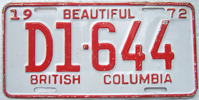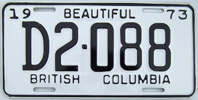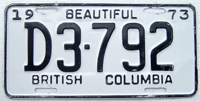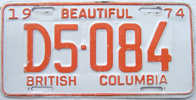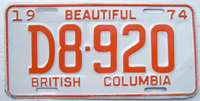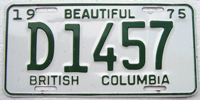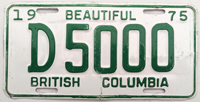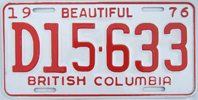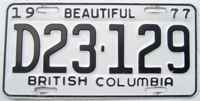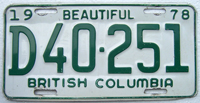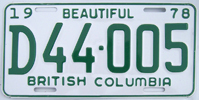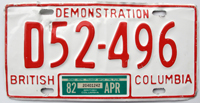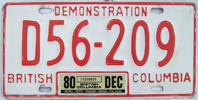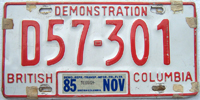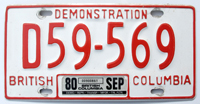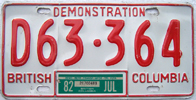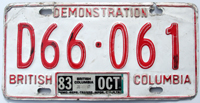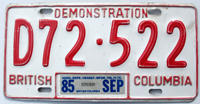|
British Columbia Dealer License Plates |
|||||||||||||||||||||||||||||||||||||||||||||||||||||||||||||||||||||||||||||||||||||||||||||||||||||||||||||||||||||||||||||||||||||||||||||||||||||||||||||||||||||||||||||||||||||||||||||||||||||||||||||||||||||||||||||||||||||||||||||||||||||||||||||||||||||||||||||||||||||||||||||||||||||||||||||||||||||||||||||||||||||||||||||||||||||||||||||||||||||||||||||||||||||||||||||||||||||||||||||||||||||||||||||||||||||||||||||||||||||||||||||||||||||||||||||||||||||||||||||||||||||||||||||||||||||||||||||||||||||||||||||||||||||||||||||||||||||||||||||||||||||||||||||||||||||||||||||||||||||||||||||||||||||||||||||||||||||||||||||||||||||||||||||||||||||||||||||||||||||||||||||||||||||||||||||||||||||||||||||||||||||||||||||||||||||||||||||||||||||||||||||||||||||||||||||||||||||||||||||
Quick Links: |
Passenger Dealer | Motorcycle Dealer |
When the Province enacted the Act to regulate the speed and operation of Motor Vehicles on Highways in February of 1904, every resident and non-resident driving a motor vehicle in British Columbia was required to register with the Superintendent of Provincial Police, who, upon receiving a $2.00 application fee, would issue a permit and registration number to be displayed prominently on their vehicle - with the exception of "manufacturers or dealers". |
Only in 1911, when the more comprehensive Act to regulate the Use and Operation of Motor-vehicles replaced the 1904 Act would detailed language related to the registration of demonstration vehicles appear. |
Specifically, any person, importing, vending, or dealing in motor vehicles had to apply to the Superintendent of Provincial Police for a trade licence, the cost of which was set at $50.00 and entitled "the holder thereof to the use of five demonstration numbers, and to offer for sale, test and demonstration five motors at one time. For each additional number a further fee of ten dollars" was required. |
Available records indicate that approximately 120 license plates were issued in 1911 to, amongst others, the following businesses: |
The Anglo-British Columbian Agency Limited |
"D6" to "D10" |
Tudhope-Alexander Company |
"D76" to "D80" |
|
Canada Cycle & Motor Company Limited |
"D16" to "D20" |
Hoffmeister Brothers |
"D81" to "D85" |
|
A.G. Brown-Jameson Company Limited |
"D21" to "D25" |
A.A. Finch Auto Company
|
"D86" to "D90" |
|
Pacific Garage & Auto Car |
"D41" to "D45" |
Vancouver Auto & Cycle Company Limited
|
"D106" to "D110" |
|
The Columbia Taxi & Cab Company Limited |
"D51" to "D55" |
Central Auto Company
|
"D101" to "D105" |
|
Dominion Motor Car Company Limited |
"D56" to "D60" |
Great Western Auto Company Limited
|
"D111" to "D115" |
|
McLaughlin Car Company Limited |
"D71" to "D75" |
Moncrop Brothers |
"D116" to "D120" |
| 1911 - 1912: Pre-Provincial | ||||||||
|
||||||||
Despite what the available records seem to indicate, the above is the only known surviving Dealer plate from the pre-provincial era and displays the remnants of the number '325'. |
||||||||
The 1911 Act also gave the Superintendent the "power to assign demonstration numbers and to direct the manner in which, and the means by which, such demonstration numbers shall be affixed to motors offered for sale; and no motor bearing a demonstration number shall be permitted to be used for hire or in any other way than for demonstration for sale. |
*
* * * * |
When the Act to regulate the Use and Operation of Motor-vehicles was amended in 1913 to allow the Province to begin supplying standardised passenger and motorcycle license plates, the Section dealing with demonstration plates was similarly updated so that the Superintendent had the ability to "assign and supply" demonstration numbers. |
The materials used on the first Dealer plates in 1913 where similar to those used for passenger and motorcycle plates that year (i.e. porcelain on a heavy gauge steel base), however, the colour scheme differed and, rather interestingly, the issuing jurisidiction is not referenced on the plate (i.e. the plates do not state "BC"). |
1913 |
||||||||
|
||||||||
 |
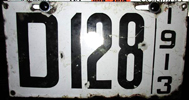 |
|||||||
While it is known that the Act allowed each licence holder registered with the Superintendent to use up to five Demonstration numbers, one of the curious differences between the 1913 and 1914 series has been the highest plate known for each year - i.e. No. 128 in 1913 versus No. 749 in 1914. |
This can be explained by the Superintendent of Police ordering five (5) of each plate number from the McClary Manufacturing Company in 1913, as can be seen in the following images: |
 |
||||
Within weeks of the 1913 Dealer plates having been issued, Superintendent Colin Campbell began to receive complaints from his constables about the challenges "in fastening the Guilt on one of the five (5) Chauffeurs" who might be using a Dealer plate at any particular time. |
Campbell advised that it would be "rather difficult to make any change this year [to adress the problem], as it would take probably three (3) months more before New Numbers could be delivered." |
Further complicating our understanding of how many of the same number might exist for 1913 Dealer plates was a decision made in March of 1913 the vehicles being driven for demonstration purposes were required to display 2 plates; one on the front and the other on the rear. Apparently, this had not been the Provincial Police's understanding of the new legislation. |
The legislation was subsequently amended in the Spring of 1913 to clarify this requirement, and Superintendent Campbell wrote to his Constables on April 15, 1913 to advise that: |
After the amendment was passed I ordered duplicate numbers of the ones now on hand, these should soon be here when I will forward you the ones required at your Office. As we are unable to supply these plates at the present time and until dealers are so supplied it would certainly appear to be a hardship if prosecution were brought again them for failure to use a front number plate. |
On May 20, 1913, Superintendent Campbell sent out the additional plates, advising that "these Markers are duplicates of the ones already issued in your district, and are to be given to licenceees who have taken out their licences so as to provide each Demonstrating Car with back and front plates in accordance with the [Motor Traffic Regulation] Act". |
There is known to be a possible seventh 1913 No. 99 in existence, however, the authentcity of the number (not the plate) is questionable as it appears to bear the marks of heavy alteration (if not doctoring) as part of its restoration (plate is shown at right). |
1914 |
||||||||
 |
|
|||||||
 |
||||||||
 |
||||||||
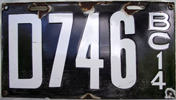 |
||||||||
*
* * * * |
Demonstration plates from the 1915-1917 era are exceedingly rare, if not impossible to come across likely owing to the inability of the tin design to stand up well to rugged wear and tear and possibly due to the war effort and material drives during these years. |
| 1915 - 1917 | |||||||||||
1-digit |
2-digit |
|
|||||||||
1-digit |
2-digit |
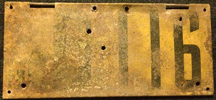 |
|||||||||
1-digit |
2-digit |
3-digit |
|||||||||
| 1919 / 1921 / 1922: Tabs | |||
.jpg) |
.jpg) |
.jpg) |
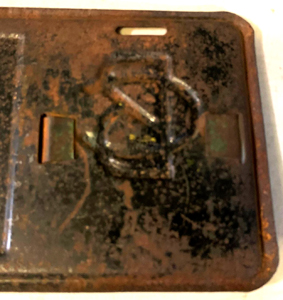 |
*
* * * * |
Interestingly, it was reported in 1927 that British Columbia was the only Canadian province to issue five (5) sets of Demonstration number plates with each approved license. |
| 1924 - 1935 | ||||||||||||||||||||||||||||||
1-digit |
2-digit |
 |
4-digit |
|
||||||||||||||||||||||||||
1-digit |
2-digit |
4-digit |
||||||||||||||||||||||||||||
1-digit |
2-digit |
4-digit |
||||||||||||||||||||||||||||
1-digit |
2-digit |
3-digit |
||||||||||||||||||||||||||||
1-digit |
2-digit |
4-digit |
||||||||||||||||||||||||||||
1-digit |
2-digit |
|||||||||||||||||||||||||||||
1-digit |
2-digit |
3-digit |
.jpg) |
|||||||||||||||||||||||||||
1-digit |
2-digit |
4-digit |
||||||||||||||||||||||||||||
1-digit |
2-digit |
4-digit |
||||||||||||||||||||||||||||
1-digit |
2-digit |
4-digit |
||||||||||||||||||||||||||||
1-digit |
2-digit |
3-digit |
4-digit |
|||||||||||||||||||||||||||
1-digit |
2-digit |
3-digit |
4-digit |
|||||||||||||||||||||||||||
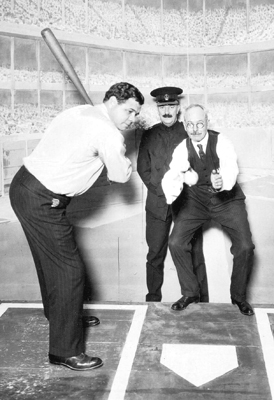 |
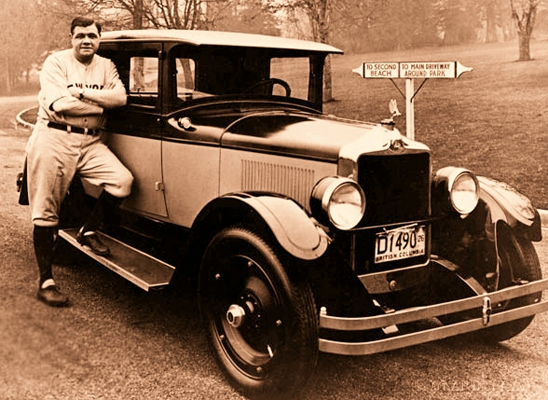 |
In 1926, Babe Ruth hammed it up on stage in Vancouver during a personal appearance tour of North America. He posed as a batter, with Vancouver mayor L.D. Taylor crouching behind him as catcher, and the city’s chief of police umpiring. Ruth also toured around the city in a Nash Sedan with a 1926 Dealer plate No. "D1490". The picture appears to have been take in Stanley Park.
|
|
 |
| 1932 |
On June 10, 1932, the Commissioner of the BC Provincial Police, J.H. McMullin, issued a letter to "All Ranks" of the force advising that as of May 31, 1932, "729 dealers' demonstration number plates had been issued and for the same period 245 salesmen's licences had been issued, from which you will note that there are a great many motor-vehicles bearing demonstration number plates being operated in contravention oto Sections 4 and 4A of the "Motor-vehicle Act" and this matter should receive your immediate attention." |
| 1933 'DX' Prefix |
As local motorists continued to take their vehicles off the roads as a result of the economic conditions affecting the province in the early 1930, the Provincial government concocted a scheme that offered two free months of registration through the use of a windhsield sticker in the hopes that this would entice people to continue using their vehicles. As a sticker could not be applied to vehicles being shown by Dealers (as this could involve multiple cars), a special issue plate, valid for the months of January and February, 1934, was prepared instead and displayed a 'DX' prefix. |
 1932 - No. 9 Dealer license plate |
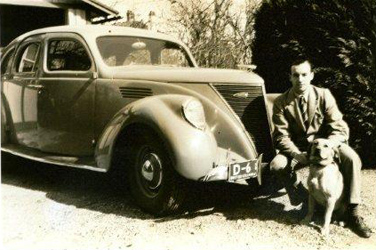 1936 - No. 6 Dealer license plate |
| 1936 - 1951 | ||||||||
1-digit |
2-digit |
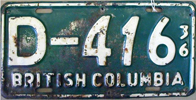 |
4-digit |
|
||||
1-digit |
2-digit |
4-digit |
|
|||||
1-digit |
2-digit |
4-digit |
|
|||||
1-digit |
2-digit |
3-digit |
|
|||||
1-digit |
2-digit |
4-digit |
|
|||||
1-digit |
2-digit |
4-digit |
|
|||||
1-digit |
2-digit |
4-digit |
|
|||||
1-digit |
2-digit |
4-digit |
|
|||||
| 1943 - Indented 'D' Prefix | ||
|
||
An oddity of the 1943 Dealer plates is the placement of the 'D' prefix on the lower numbered plates in the series. Generally, the 'D' prefix was always situated to the left of the plate in previous years, but for some reason the letter migrated towards the middle of the plate for numbers under one-hundred. |
1-digit |
2-digit |
4-digit |
|
|||||
1-digit |
2-digit |
4-digit |
|
|||||
1-digit |
2-digit |
4-digit |
|
|||||
1-digit |
3-digit |
4-digit |
|
|||||
1-digit |
2-digit |
4-digit |
|
|||||
1-digit |
2-digit |
4-digit |
|
|||||
2-digit |
3-digit |
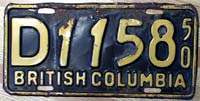 |
|
|||||
1-digit |
2-digit |
|
| 1952 | ||||||||
1-digit |
 |
 |
|
|||||
| 1953 - 1954 | ||||||||
1-digit |
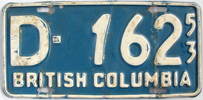 |
 |
|
|||||
1-digit |
2-digit |
3-digit |
|
|||||
*
* * * * |
By the 1960s and 1970s, the cost of obtaining a Dealer's licence had increased to $5,000.00, which had to take the form of an insurance bond supplied to the Superintendent
of Insurance, or a security filed
with the Minister of Finance. |
Moreover, a
process of investigation was now carried out for each
new motor-dealer. Information in connection with the proposed
operation, previous business, corporate formation, business
intentions, premises, and compliance with municipal zoning
regulations would be considered before a license would be
authorized. |
| 1955 - 1963 | ||||||||
2-digit |
4-digit |
|
||||||
1-digit |
 |
4-digit |
|
|||||
1-digit |
2-digit |
3-digit |
 |
|
||||
1-digit |
2-digit |
 |
4-digit |
|
||||
1-digit |
2-digit |
3-digit |
|
|||||
1-digit |
4-digit |
|
||||||
1-digit |
2-digit |
|
||||||
1-digit |
 |
|
||||||
1-digit |
2-digit |
|
||||||
| 1964 - 1971: "Beautiful" Slogan | ||||||||
1-digit |
2-digit |
3-digit |
|
|||||
1-digit |
2-digit |
|
||||||
3-digit |
|
|||||||
1-digit |
|
|||||||
1-digit |
2-digit |
|
||||||
1,000 block |
2,000 block |
3,000 block |
 |
|
||||
2,000 block |
3,000 block |
4,000 block |
|
|||||
1,000 block |
3,000 block |
|
||||||
| 1965 - Big 'D' / Little 'D' | ||
.Kind of sounds like a line from a Doctor Suess book doesn't it ("Big 'D' / Little 'D'")? What more can I say, other than something to look for if you are into collector oddball variations. |
| A great picture of a new 1964 Datsun with Dealer plate No. 372 being promoted with a backdrop of Vancouver complete with a Totem Pole and the Red Ensign! |
| 1972 - 1978 | ||||||||
2,000 block |
3,000 block |
4,000 block |
|
|||||
5,000 block |
||||||||
1,000 block |
4,000 block |
|
||||||
5,000 block |
6,000 block |
7,000 block |
|
||||||
9,000 block |
3,000 block |
4,000 block |
|
||||||
6,000 block |
7,000 block |
10,000 block |
11,000 block |
12,000 block |
13,000 block |
|
||||
14,000 block |
16,000 block |
17,000 block |
||||||
18,000 block |
19,000 block |
20,000 block |
21,000 block |
|||||
22,000 block |
23,000 block |
|
|
| 1979 - 1986 | ||||||||
53,000 Block
|
54,000 Block
|
|
||||||
61,000 Block
|
||||||||
64,000 Block
|
67,000 Block
|
|||||||
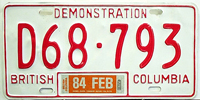 |
70,000 Block
|
 |
||||||
73,000 Block
|
74,000 Block
|
75,000 Block
|
||||||
 |
||||||||
| 1985 - present: Flag Graphic | ||||||||||||||||||||
 |
|
|||||||||||||||||||
 |
 |
|||||||||||||||||||
 |
 |
Now, we all know that Demonstration plates are only issued as singles, which makes the plate shown above so interesting. The first plate in the series - "D0-0000" - is understood to have been issued to a Victoria area dealership in 1986 and displays the proper Astrographic dies for early issue plates (at left). However, another "D0-0000" plate is also known to exist in pristine, un-issued form (at right). What explains the two? Given the dealership only appears to have used the plate for one year, we wonder if ICBC required it be taken off the road, or if the Corporation used the opportunity of it not being renewed to reserve the number for themselves and to have an alternate plate made up for use in promotional material? |
|
Quick Links: |
Passenger Dealer | Motorcycle Dealer |
| Sources |
| Superintendent of Motor Vehicles, Annual Report, 1948-1973 |
| 1964 to 1971 Motorcycle Dealer plate from the collection of Greg Iverson |
Antique | APEC | BC Parks | Chauffeur Badges | Collector | Commercial Truck | Consul | Dealer | Decals | Driver's Licences | Farm | Ham Radio | Industrial Vehicle | Keytags | Lieutenant Governor | Logging | Manufacturer | Medical Doctor | Memorial Cross | Motive Fuel | Motor Carrier | Motorcycle | Movie Props | Municipal | National Defence | Off-Road Vehicle | Olympics | Passenger | Personalized | Prorated | Prototype | Public Works | Reciprocity | Repairer | Restricted | Sample | Special Agreement | Temporary Permits | Trailer | Transporter | Veteran | Miscellaneous |
© Copyright Christopher John
Garrish. All rights reserved.



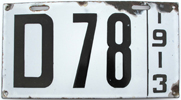


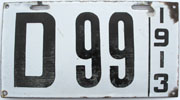

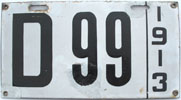
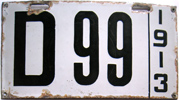
.jpg)

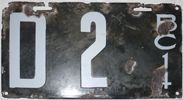
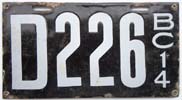
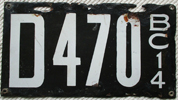

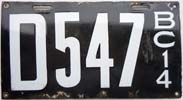
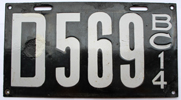
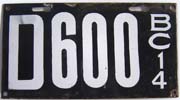
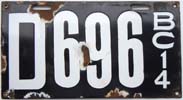


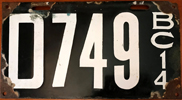
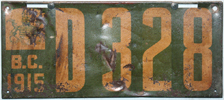








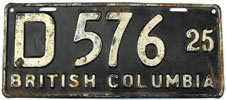
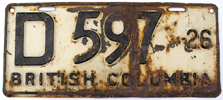


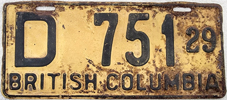




.jpg)
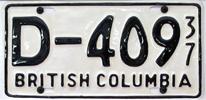
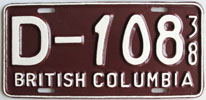

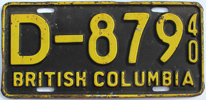
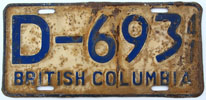

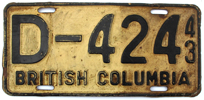
.jpg)
.jpg)
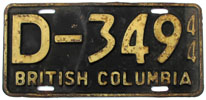
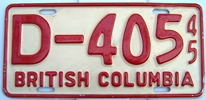
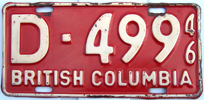
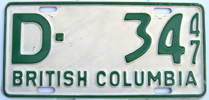
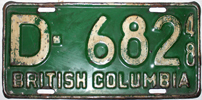
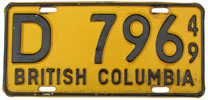
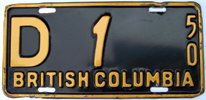
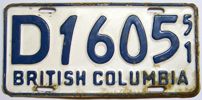
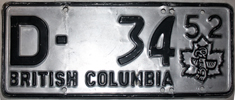

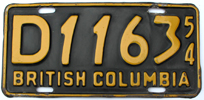

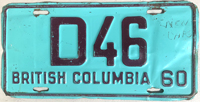

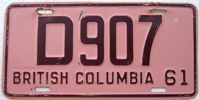
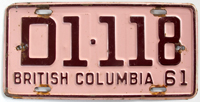

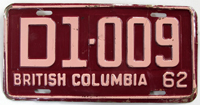




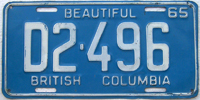
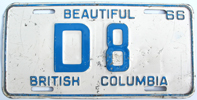


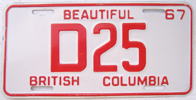
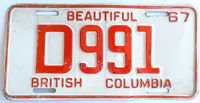
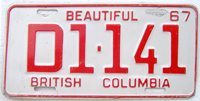



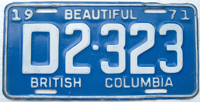
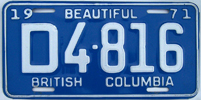
.jpg)
.jpg)

